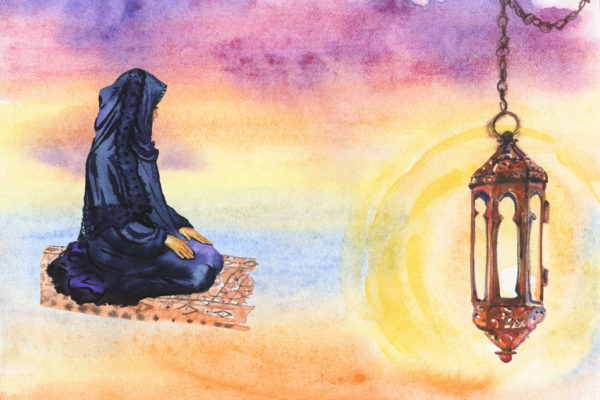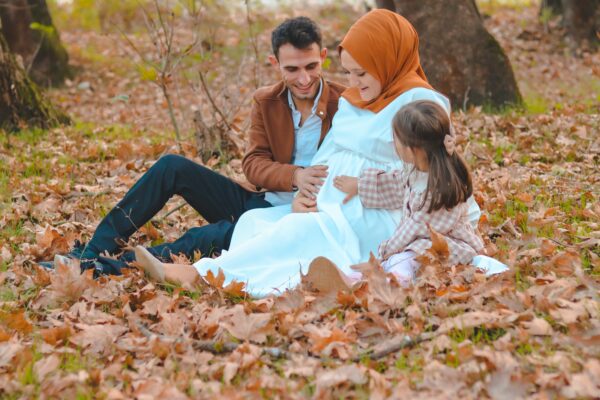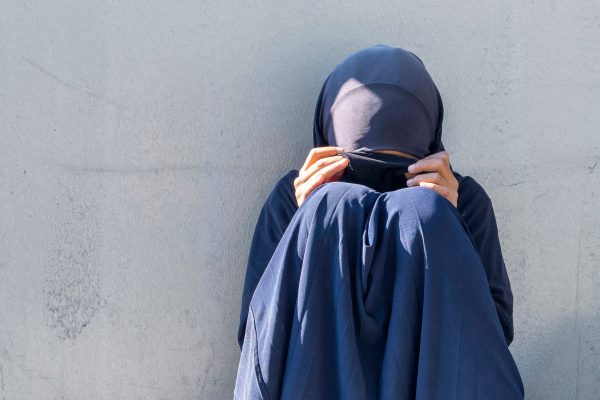From teaching Islam to encouraging social activism, Shaheeda Bint Al-Huda worked tirelessly to keep Muslim women in Iraq true to their faith and strength.
From teaching Islam to encouraging social activism, Shaheeda Bint Al-Huda worked tirelessly to keep Muslim women in Iraq true to their faith and strength.
In the life of Shaheeda Bint Al-Huda were several roles that were great and had a societal trace on the life of a Muslim woman, that is in dire need of now and in the future.
Here are 8 ways that this inspiring woman helped changed the way we should all understand sacrifice, social activism, and faith:
1. Changing the style so that it fits with the world of women
She was not concerned in busying women with religious commands and certainly those who were newly religious, as much as getting them to understand the Islamic worldview and what it has to offer in an otherwise plagued society. She used to follow the general Dawah, and when she used to meet the females in her non-specific sessions she would wear full hijab.
Kauther Al Kufi narrated: I said to her one time: ‘Why do you wear the hijab, especially thick socks when you are inside your own home?’ She would say, ‘I want to teach that the correct hijab is this way’. Kauther would say: ‘One of the sisters told me that Bint Al-Huda did not ask from her to wear loose clothing, only after three years, after realizing she was in a situation that enabled this, so she explained to her the ruling of the hijab in Islam.’
2. Interest in developing and directing the energies of women
Shaheeda Bint Al-Huda worked to explode the energies of women and to grant her the confidence in herself to uphold her full responsibility in life, and that is through studying and working in society. She used to always urge the girls to attain well in education and achieve certificates in various fields, saying: ‘We are working for the sake of establishing an Islamic society, and this society requires all energies, for this we need the trusted female doctor, the female engineer, the teacher who is aware and the religious worker’.
This was all for the sake of a woman feeling her responsibility, and she used to thereby encourage the women in any field she works in, to do so for the sake of Islam.
3. Developing the spirit of a sense of legitimate duty
She wanted women to realise the weight of responsibility that is on her neck when it comes to truly living Islam. Kauther Al Kufi says: ‘She urged us to always make our objective in life to work for the sake of Islam and Muslims, and to my mind crosses the last meetup with her, a few months before her detainment, I went to her and she admonished me… “Why did you stop going to the mosque? Why have you stopped attending the lesson of the sheikh? Why did you stop your Islamic work, isn’t this our duty?”’ Kauthar says: ‘I looked to the ground out of shyness from her words but I gathered my strength and said to her: “Sayeda, you know that the situation is in crisis and I am scared of being imprisoned, I am scared of falling into the hands of the Ba’athi security, for they do not respect the woman when they detain her.”’
Shaheeda Bint Al-Huda was ailing at her words and proceeded to say: “These are wrong concepts, our dignity is Islam. If we preserve Islam we would have preserved our dignity and pride, why did Sayeda Zainab (sa) not forsake Jihad? In her we have a good example.”’ This had a great effect on Kauther and became the catalyst for her to take on the burden of responsibility, especially when she saw that Bint Al-Huda embodied her words when she accompanied her brother, until she earned the dignity of martyrdom.
4. Carrying out visits and fulfilling various goals
She would visit the homes of her sisters to simply find out how they were and to fulfil any needs they had, from financial support to cultural visits, and for the purpose of reassurance on their health any fulfilling any other need. She also had the goal of getting them to support and strengthen one another, thereby seeking to instill within the souls of the believing woman the spirit of Islam and its ethics, thereby making her feel she is a part of the rest and shares their ailments, concerns, and happiness.
She would console the stricken families, especially the family of the martyrs, and she would say to the wives of the martyrs in her first visit after the martyrdom of her husband: ‘We take pride and blessings in you that you are the wife of a martyr.’
5. Strengthening individuals as the base for reforming society
From the impacting and successful styles that she followed was the selection of specific models of pious sisters and granting them special care and attention, through specialized lessons and seminars that she would conduct from her home, or in their homes.
She would also conduct family visits to their homes for the purpose of impacting the whole family, which allowed her to find an elite in the midst of society, through which she could launch into society to change and impact it in an influential and programmed organizational style.
Through this style, she was able to bring forth hundreds of her pious influential students, whereby they continued the path so each of them would influence their field and arena, and through that she created the nucleus for organizational Islamic action. She used to carry with her the burden of the message in guiding the sisters towards faith, even preferred to sacrifice marriage, to commit every second of her life to be free for Islamic work, despite the fact some great scholars proposed for her marriage.
6. Giving lectures and teaching
Shaheeda Bint Al-Huda set up intellectual Islamic seminars in her house, that was open to females from students at universities, schools to workers, through which she would put forth various concepts after shining the light on plain realities, including the fakeness of Western society that infiltrated Iraqi thought and has numbed the women, by turning her into a plaything that does not know her true reality in society that she makes up more than half of. These were focused on the ideological structures governing society, and the need for Islam to bring about reform.
She also held Majalis in which she would put forward religious lectures, conducting these at the house of her brother Shaheed Mohamed Baqir Al-Sadr, whereby 50 Muslim women would flock towards them. She would answer the questions that would be on their minds regarding various ideologies, the Islamic belief system, and Islamic jurisprudence, and would teach the book Shara’i’ al-Islam by Muhaqqiq Al-Hilli.
7. Placing hope and optimism in the souls of Muslim women
She would place hope and optimism in the souls of all the faithful women, and especially the households of the detainees; she would work to stir up the spirit of jihad and would urge them to be steadfast and patient, to face difficult circumstances without fear or hesitation. Aside from that she would pray to Allah (swt) to free the detained, and especially on the souls of the martyrs.
8. Undertaking Islamic education through setting up Islamic schools
Shaheeda Bint Al-Huda was selected in the year 1967 to be the supervisor for the Zahra schools in Baghdad and Kazimiya, Iraq, that is affiliated with the Islamic Charitable Fund Association, and worked hard to put forth educational curriculums that suited the needs of Muslim women at the time. From Islamic thought to general ethics that was non-existent in the secular educational framework of the state, in addition to holding weekly seminars in the schools, explaining in them the principles of Islam and its foundation, Shaheeda Bint Al-Huda worked tirelessly in this sector.
She was a great source of influence for the staff teachers to grow within them the motivation to teach this syllabus, and was a model for their interaction with students, as she would spend time during the student breaks, listening to their worries and solving their problems – even familial ones, which made her a source of love and understanding for all pupils.
Shaheeda Bint Al-Huda thus became the highest example of her time, who paved the way for general reform in wide sectors of society and in families, through her influence on hundreds of daughters, which made the Iraqi authorities open their eyes to the imminent danger sprouting from these schools, that was causing a mass awakening of Muslim women through an understanding of her position and role in Islam.
This culminated in a decision by the highest authority of the state to shut down the schools in the year 1972, with the original Islamic curriculum removed. Shaheeda Bint Al-Huda resigned from these schools and repeated efforts from the Ministry of Education were made to return her back to teaching, however she refused to be a tool that passed secular education into teaching, and as one of her pupils stated: “They sent her many official books demanding for her return. And once when she was asked about the reasons for refusing the official requests to return, she stated: ‘The purpose of my presence in the school was only to seek the pleasure of God, and when the purpose of the school was stripped by its nationalization to the secular education, then what is the use of my presence after that?’”
She used to go to Baghdad and Kazimiya every 3 days, and spent the rest of the days in Najaf, as she had other important work there; never was she settled or free during the hours of the day, and what directed her towards her objectives was her uncompromising and great faith in Islam as a belief, principle and system, and her pride in striving to create an Islamic society. Through these schools, she was able to build bridges with the females at universities, thus exemplifying the physical hijab in the corridors of the Iraqi universities, after they were completely emptied from it. These universities were an important tool for the encouragement of the state towards the removal of the hijab, and there were females who even came from scholarly and religious families who used to remove their headscarf once entering the university.
With the passing of time, the minority of religious girls became many, and the domination of hijab in the university spaces was something all had witnessed, particularly in the campuses of Baghdad, Mosul, Basra, Sulaimaniya, and Kufa university. Faithful teachers began to take over schools to reform the girls in its middle and high school; although they had never met Shaheeda Bint Al-Huda, it was as though they had a strong relationship with her, as they were among those who joined her movement and were inspired simply by hearing about her activities, thereby embarking on the line of Islamic Daw’ah.
Sources
Shaheeda Bint Al-Huda: Al-Seerah Wal Maseerah], by Muhammad, ‘Arif Kazim, published in 2004.





